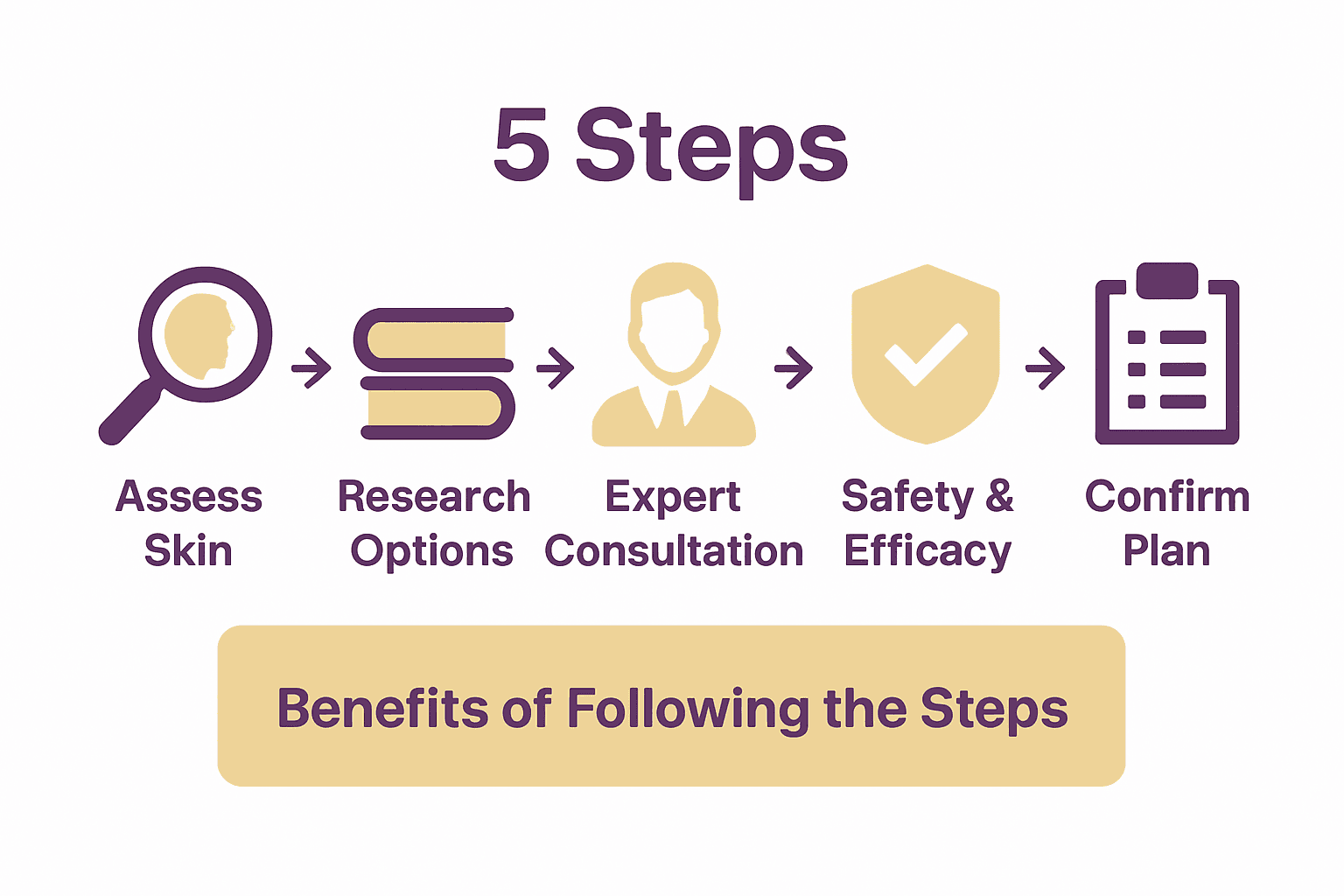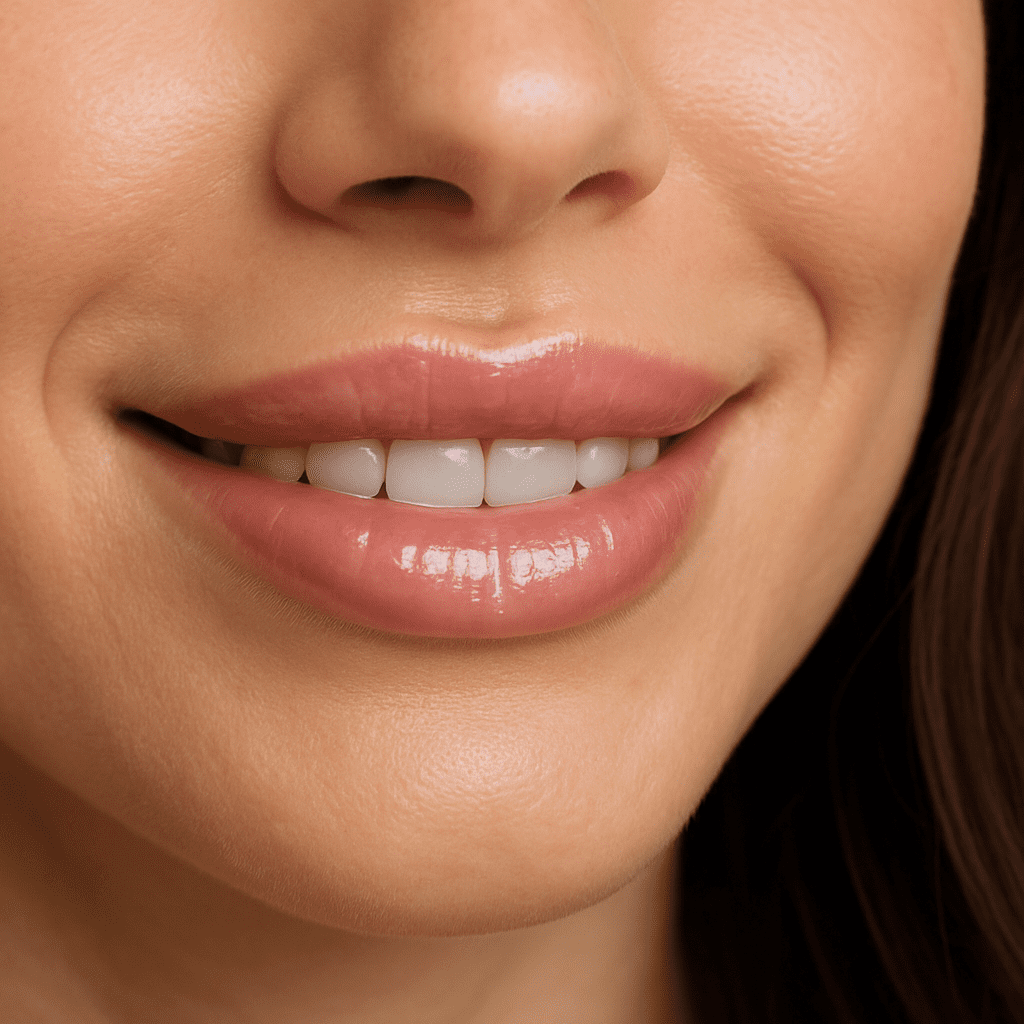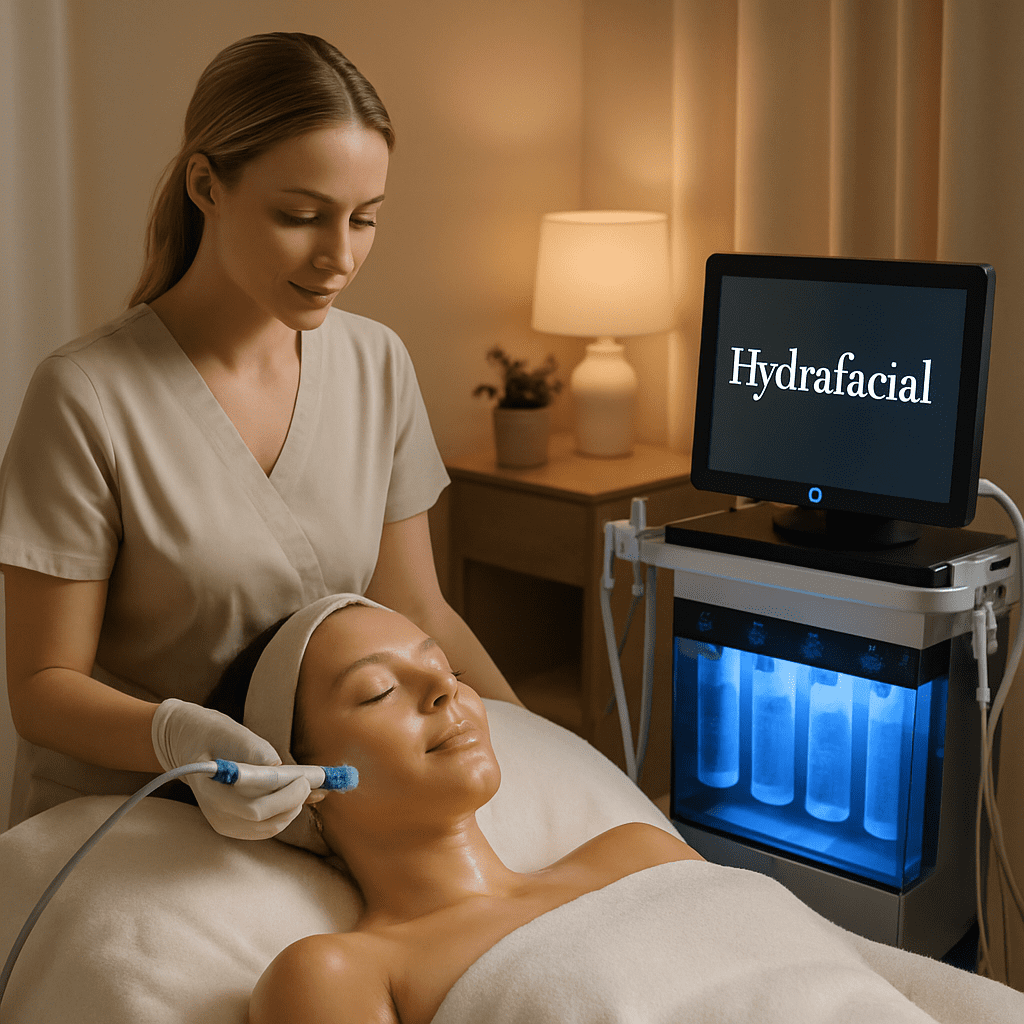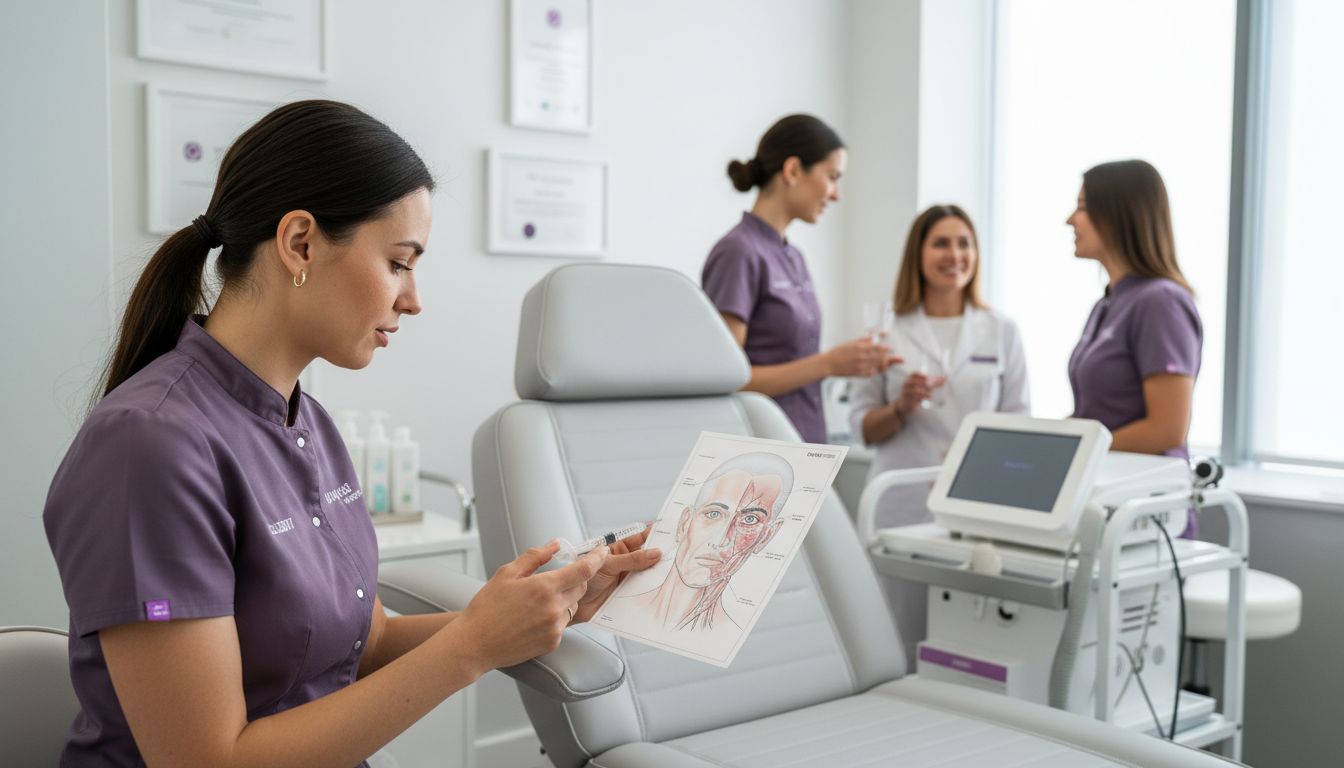Over 60 percent of adults feel uncertain when choosing the best solutions for their skin concerns, according to recent studies. The maze of options, expert opinions, and countless product claims can make it tough to know where to begin. When your skin goals feel just out of reach, having a clear, step-by-step approach helps you target your unique needs, sort fact from myth, and build a plan that delivers genuine results you can see and feel.
Table of Contents
- Step 1: Assess Your Skin Concerns And Goals
- Step 2: Research Suitable Non-Surgical Options
- Step 3: Consult A Qualified Medical Aesthetic Expert
- Step 4: Evaluate Treatment Safety And Effectiveness
- Step 5: Confirm Your Personalized Treatment Plan
Quick Summary
| Key Point | Explanation |
|---|---|
| 1. Assess your skin concerns accurately | Conduct thorough self-examinations to identify specific skin issues and document findings for consultations. |
| 2. Research non-surgical treatments options | Explore scientifically approved treatments tailored to your identified skin concerns for informed decision-making. |
| 3. Consult a qualified aesthetic expert | Meet with a board-certified professional to discuss your goals and treatment plans based on your unique skin profile. |
| 4. Evaluate treatment safety and efficacy | Assess the safety and effectiveness of treatments by reviewing studies, discussing risks, and checking professional qualifications. |
| 5. Confirm your personalized treatment plan | Finalize a treatment strategy that aligns with your goals, addressing timing, costs, and necessary care steps. |
Step 1: Assess Your Skin Concerns and Goals
Understanding your unique skin profile is the foundational first step in selecting the right aesthetic treatments. This process involves carefully examining your current skin condition, identifying specific concerns, and establishing clear aesthetic goals that align with your overall wellness objectives.
Begin by conducting a thorough self examination of your skin. According to the National Institutes of Health, regular self assessments are crucial for detecting changes and potential skin issues early. Start by examining your skin in good natural light while using a handheld mirror to check hard to see areas. Look for specific characteristics such as:
- Uneven skin tone or hyperpigmentation
- Fine lines and wrinkle formation
- Areas of dryness or excessive oiliness
- Visible sun damage or age spots
- Active acne or acne scarring
- Skin texture irregularities
Document your observations systematically. Take clear photos from multiple angles and note any specific concerns you want to address. This visual record will help you communicate effectively with aesthetic professionals and track your progress over time. Understanding these details will enable you to have a more productive consultation and select treatments precisely matched to your skin goals.
When you’re ready to move forward, our guide on essential skin treatments can provide additional insights into potential solutions tailored to your specific skin profile.
Step 2: Research Suitable Non-Surgical Options
Once you have identified your specific skin concerns, the next critical step is exploring appropriate non surgical treatment options that align with your aesthetic goals. This research phase is about understanding the range of potential solutions and their effectiveness for your unique skin profile.
According to Harvard Health Publishing, there are multiple scientifically approved non surgical treatments designed to address various skin conditions. Begin your research by investigating treatments that match your specific concerns such as:
- Laser skin resurfacing for uneven skin tone
- Chemical peels for hyperpigmentation
- Microneedling for texture improvement
- Dermal fillers for volume restoration
- Botox for fine line reduction
- Photofacial treatments for sun damage
As the American Skin Association emphasizes, understanding the nuances of each treatment is crucial. Investigate each option thoroughly by consulting professional resources, reading scientific literature, and scheduling consultations with qualified aesthetic professionals who can provide personalized recommendations.

To help narrow your research, learn about non surgical rejuvenation techniques that might specifically address your skin concerns and provide targeted solutions for your aesthetic goals.
Step 3: Consult a Qualified Medical Aesthetic Expert
Now that you have researched potential non surgical treatments, scheduling a consultation with a qualified medical aesthetic professional is the most critical step in your aesthetic journey. This personalized meeting will help translate your skin goals into a targeted treatment strategy.
According to the American Skin Association, finding the right dermatology expert is fundamental to achieving optimal skin health. During your consultation, prepare to discuss your comprehensive skin assessment, including detailed information about your skin concerns, medical history, lifestyle factors, and aesthetic objectives. Look for professionals who are:
- Board certified in dermatology or aesthetic medicine
- Experienced with your specific skin concerns
- Capable of providing comprehensive treatment recommendations
- Willing to explain procedural risks and potential outcomes
- Transparent about expected results and recovery processes
The American Academy of Dermatology emphasizes the importance of asking detailed questions during your consultation. Come prepared with a written list of concerns, bring your skin assessment documentation, and be ready to discuss your treatment expectations openly. A skilled aesthetic expert will provide personalized guidance that aligns with your unique skin profile and aesthetic goals.
To help you prepare for this crucial consultation, learn more about why consulting an aesthetic clinic is important and what you can expect during your first appointment.
Step 4: Evaluate Treatment Safety and Effectiveness
After identifying potential aesthetic treatments during your consultation, your next critical step is carefully evaluating their safety and potential effectiveness for your specific skin concerns. This thorough assessment will help you make an informed decision about proceeding with any recommended procedures.
According to Harvard Health Publishing, understanding the nuanced details of treatment options is essential. When evaluating treatment safety and effectiveness, consider the following comprehensive approach:
- Review clinical research and scientific studies supporting the treatment
- Assess potential short term and long term side effects
- Compare success rates and patient outcomes
- Understand individual risk factors based on your medical history
- Request before and after documentation from previous patients
- Confirm the qualifications of professionals performing the procedure
The National Library of Medicine emphasizes the importance of an evidence based approach when selecting aesthetic treatments. Request transparent information about success rates, potential complications, and expected recovery timelines. Your medical aesthetic professional should provide clear documentation and be willing to discuss potential risks openly and comprehensively.

To help you navigate this critical evaluation process, learn more about non surgical treatment approaches that can provide additional context for your decision making.
Step 5: Confirm Your Personalized Treatment Plan
With all your research and consultations complete, the final step is solidifying a treatment plan that precisely matches your unique skin goals and health profile. This critical phase transforms your aesthetic vision into a strategic and personalized roadmap for skin transformation.
According to the American Skin Association, developing an individualized treatment strategy requires careful consideration of multiple factors. When confirming your personalized treatment plan, ensure you thoroughly review and discuss:
- Specific treatment sequence and recommended timeline
- Expected outcomes and realistic performance indicators
- Comprehensive cost breakdown
- Potential interactions with existing health conditions
- Required preparatory steps and post treatment care
- Flexibility for potential plan adjustments
The National Institutes of Health emphasizes that truly personalized skin care plans must be dynamic and responsive to your body’s changing needs. Work closely with your aesthetic professional to create a plan that not only addresses your current concerns but also supports long term skin health and aesthetic goals.
To support your decision making process, explore our detailed Hydrafacial procedure guide which can provide additional insights into personalized skin treatment approaches.
Discover the Perfect Treatments Tailored to Your Skin Goals
Choosing the right aesthetic treatments can feel overwhelming when faced with so many options and the desire to see real, lasting results. This article helps you understand your skin concerns, explore non surgical options, and work with experts to create a personalized plan. If you want to move beyond uncertainty and take confident steps toward radiant, youthful skin, you are in the right place.

At Simcoe Cosmetic Clinic, we specialize in non surgical cosmetic procedures designed around your unique skin profile and goals. Our expert team offers advanced treatments like Botox, dermal fillers, and targeted skin rejuvenation with a commitment to safety and effectiveness. Start your journey with trusted advice from Get The Latest Medical Articles – Scclinic.ca and discover how our customized solutions can help you achieve the glow you desire. Ready to transform your skin and boost your confidence? Visit Simcoe Cosmetic Clinic today and schedule your consultation to create a plan that truly works for you.
Explore more insights in the Uncategorized Archives – SIMCOE COSMETIC CLINIC and take control of your skin health now.
Frequently Asked Questions
How do I assess my skin concerns before selecting aesthetic treatments?
To assess your skin concerns, conduct a thorough self-examination in natural light, looking for issues like uneven skin tone, fine lines, and dryness. Document your findings, including photos from multiple angles, to help articulate your concerns during consultations.
What are some effective non-surgical treatment options for different skin goals?
Effective non-surgical treatment options include laser skin resurfacing for uneven tones, chemical peels for pigmentation, and microneedling for texture. Research these options to see which align with your specific goals and consider scheduling consultations to discuss them further.
How do I prepare for a consultation with a medical aesthetic expert?
To prepare for a consultation, gather your documented skin assessment and create a list of questions regarding your concerns and what treatments are suggested. Aim to be clear about your aesthetic goals and any medical history that might impact treatment choices.
What safety factors should I consider when evaluating aesthetic treatments?
Consider potential side effects, clinical research supporting the treatments, and the experience level of the professionals performing them. Ask for before-and-after documentation from previous patients to gauge success rates and outcomes.
How can I confirm that my personalized treatment plan is right for me?
To confirm your treatment plan, discuss details such as the specific sequence of treatments and expected outcomes with your aesthetic professional. Ensure that the plan accommodates any existing health conditions and outlines preparatory steps and post-treatment care.
Recommended
- 7 Essential Types of Skin Treatments for Glowing Results – SIMCOE COSMETIC CLINIC
- Why Consult an Aesthetic Clinic: Complete Guide – SIMCOE COSMETIC CLINIC
- How Skin Rejuvenation Works: Complete Guide – SIMCOE COSMETIC CLINIC
- Best Clinics for Skin Rejuvenation – Expert Comparison 2025 – SIMCOE COSMETIC CLINIC
- Hair and Skin Care: Expert Tips for Stronger Growth 2025 | MyHair
- Cosmetic Orthodontics: Options and Outcomes | cruzorthodontics.com





